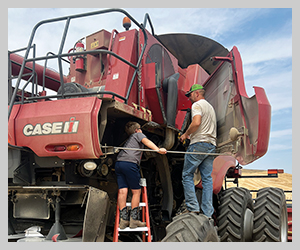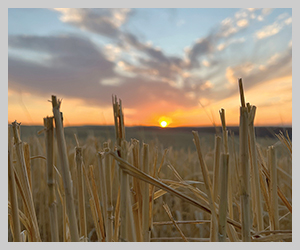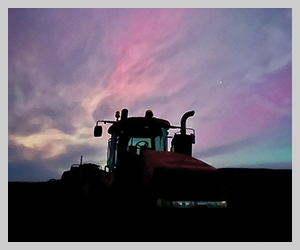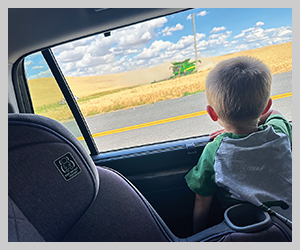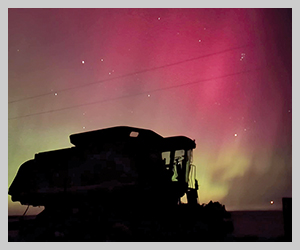Coolish on carbon Are agricultural carbon offset markets sustainable over the long term?
2022March 2022
By Trista Crossley
Editor
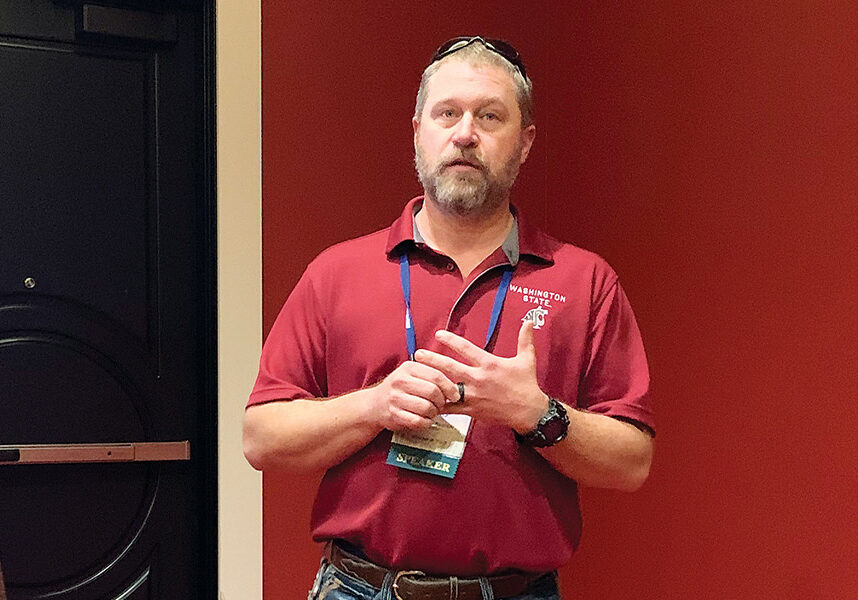
At December’s 2021 Tri-State Grain Growers Convention, two break-out sessions tried to clear the air concerning carbon markets. Shelby Swain Myers, an economist from the American Farm Bureau, looked at the developing national carbon market programs, while Chad Kruger, director at the Washington State University (WSU) Center for Sustaining Agriculture and Natural Resources, talked about why he’s skeptical that agricultural carbon offset markets will be sustainable over the long term.
In a follow-up conversation, Kruger explained the issue, as he sees it, is with carbon offset credits in a regulatory system where the credits are based on soil carbon sequestration. The concept of a carbon marketplace first grew out of the 1997 Kyoto Protocol, an agreement that extended an earlier international treaty by state parties to reduce greenhouse gas emissions. The idea was that emitters could potentially purchase “offsets” to meet their emissions targets, those offsets coming from other emitters who had directly reduced emissions or from third parties—like farmers—who agreed to sequester carbon in exchange for a payment.
“The idea was that with more research and better instruments, we would figure out how to answer the question of exactly how much soil carbon a farmer can sequester with precision. I think that may have been a little bit of wishful thinking,” Kruger said. “I think that the marketplace, which is really about contracts, was assuming that we would be able to treat soil carbon the same way you could treat a regulated smokestack or tailpipe. For a smokestack, you could calculate exactly how many tons of CO2 equivalent for every ton of coal or oil you burned. I think we know a lot more about soil carbon now than we did 20, 25 years ago in terms of what the options are for increasing soil carbon, how to do it, how to potentially measure it in different ways, and even how to predict it within a range. But soils are a dynamic system, and it’s just not as conducive to a contracting type of world as smokestacks and tailpipes are.”
Kruger believes that any program for measuring and quantifying soil carbon is going to have to accept a little less precision because of the dynamics of the system, and that can be a turn-off for some. While the carbon marketplace is currently centered on voluntary actions that can tolerate that variability, he explained that as the regulatory side starts ratcheting down on emitters, those emitters are likely going to desire a higher and higher quality of carbon to ensure that they are meeting their regulatory compliance. “Quality” may simply be a valuation consideration, where severe price discounts are levied against soil carbon as assurance that targets are actually met.
In fact, Kruger thinks the moment emitters come under regulations that say they “must” offset their emissions and compliance liability increases, they’ll go looking for different ways to meet their emissions reductions targets other than soil carbon; however, the potential for soil carbon sequestration is too big to discount.
“The potential for soil carbon sequestration across the landscapes of the globe is a big number. It’s not very big per acre, but when you start aggregating hundreds of millions of acres, it’s huge. There is no comprehensive solution to the global carbon balance problem that doesn’t include increasing soil carbon sequestration,” Kruger explained. “I just think that it’s going to be very difficult to sustain an offset credit strategy over the long run as regulatory systems mature.”
One of the problems that needs to be solved is the measurement and verification of soil carbon—how does a farmer forecast what they will potentially sequester, and how does a farmer prove what they’ve actually sequestered? Kruger thinks Pacific Northwest researchers have gotten pretty good at the estimating capabilities— particularly in the dryland grain systems closest to the major land-grant universities.
“Once you break out of that area, you see a pretty steep decline in the breadth and depth of our understanding of how to estimate soil carbon sequestration across the region and production systems,” he explained. The universities have been working to fill these gaps. For instance, a soil scientist was recently hired in Mount Vernon to study soil health and carbon dynamics in annual and perennial cropping systems in the northwest part of the state.
Another issue with estimating the amount of soil carbon sequestration is that when a change is made to the soil, such as moving to a no-till system, there can be a fairly big, fast response that slows over time. Even so, it takes many years to see significant changes in soil carbon levels. One challenge with this is single point-in-space/time studies or sampling strategies don’t necessarily produce a comprehensive or accurate picture of soil carbon dynamics, and the results don’t always track with the “phenomenon” that a farmer may experience after making a management change.
In his convention session, Kruger used a bathtub analogy to explain that farmers need to make sure they’ve plugged the drain to stop losing carbon before they start trying to increase what’s coming into the bathtub. At some point, farmers will hit an equilibrium where inputs and outputs balance each other. Although Eastern Washington farmers have already made big strides towards reaching that equilibrium through changing tillage methods and, especially, stopping soil erosion, after more than a century of farming, there are very few cultivated soils that are anywhere close to what they were precultivation.
“If it took us 100 years to lose half the water that was in the bathtub, maybe it will take us 100 years to turn that around. Maybe we can speed it up a little bit, but I think we need to be practically realistic that it took us a long time to get where we are at. It’s probably going to take a long time to go the other way, and we don’t really know whether we can reach, or even exceed, precultivation levels of soil carbon,” he said.
While carbon tends to get the spotlight, farmers might find greater immediate value in focusing on other greenhouse gases, like nitrous oxide. Kruger said in studies looking at reducing nitrous oxide emissions, researchers have found that the potential amount of money a farmer could save by not over-applying nitrogen was “an order of magnitude” more valuable than the potential carbon credit value.
“I see that as, really, let’s not get so fixated on carbon offset credits in a marketplace. Maybe there will be some opportunities there, but likely, there’s going to be more opportunities or more ways that we could value and monetize some of these sustainable practices,” he explained. “I think farmers can and will get compensated for carbon sequestration. It just may come through a broader array of mechanisms that are more tolerant of the inherent variability of soil carbon than offsets in a regulatory marketplace.”
People often equate carbon sequestration with soil health, but Kruger says they aren’t the same thing. Generally speaking, when a farmer improves soil health, they see an increase in soil carbon sequestration, but soil carbon isn’t the only indicator—and may not even be the best indicator—of improved soil health.
“I think there needs to be a lot more work on the soil health front to put more meaning and value on what are the best indicators for the production system and region, and what do they tell us on the soil health front,” Kruger said. “But generally speaking, if you zoom out to the 30,000 foot view, I think it’s pretty safe to say increased soil health or improved soil health will result in increased soil carbon sequestration. But I think this raises the question, is the objective increasing soil carbon or is that an ancillary? When you are looking at the question from a soil health perspective, you are starting to think about a whole bunch of additional things that focus on the value to the producer.”
Carbon markets are part of a broader suit of programs called ecosystem services markets or environmental services markets. Kruger hopes that in the long run, the public starts to take more of an ecoservices lens to these positive agricultural practices instead of focusing solely on carbon.
“I think the value proposition of having working farms with farmers doing the very best they can do based on what we know how to do, that has to be a value that at some point in time gets monetized,” he said.
There’s a lot of research being done around the Pacific Northwest on climate, agriculture and natural resources. Producers can visit agclimate.net for the latest news.




